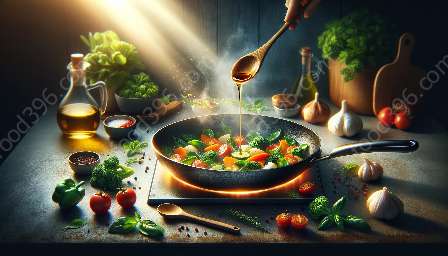When it comes to cooking, searing is an essential technique that adds flavor and texture to your dishes. In this guide, we'll explore the art and science of searing, its relation to sauteing, and how it fits into the broader realm of food preparation techniques.
What is Searing?
Searing is a cooking method that involves cooking food at high temperatures in a dry environment, typically in a pan or on a grill. The goal of searing is to brown the surface of the food quickly to create a flavorful crust while sealing in the juices and moisture.
How Searing Differs from Sauteing
While searing and sauteing both involve cooking food over high heat, there are key differences between the two techniques. Searing is usually used for larger cuts of meat or fish, while sauteing is best suited for smaller pieces of food that are cooked quickly in a small amount of fat. Searing imparts a deep, caramelized flavor, while sauteing aims to cook food evenly and quickly, preserving its natural flavors and textures.
Why Searing Matters in Food Preparation
Searing plays a crucial role in food preparation as it enhances the overall flavor profile of the dish. The Maillard reaction, which occurs during searing, results in complex, savory flavors that add depth and richness to the food. Additionally, searing helps to create an appetizing appearance by giving the food a visually appealing crust or char.
Tips for Perfect Searing
- Prep your ingredients: Ensure that the surface of the food is dry before searing to achieve a good crust.
- Use the right pan: A heavy-bottomed pan, such as cast iron or stainless steel, is ideal for searing due to its ability to conduct and retain heat.
- Allow space for browning: Avoid overcrowding the pan to give the food enough space to caramelize evenly.
- Monitor the temperature: Heat the pan thoroughly before adding the food, and avoid moving or flipping the food too frequently during searing.
- Rest the meat: Allow the seared meat to rest before slicing or serving to allow the juices to redistribute throughout the cut.
Searing in Action: Recipes to Try
If you're eager to experiment with searing, here are a few delightful recipes to get you started:
- Searing a Perfect Steak: Achieve a beautifully seared steak by following the right techniques and seasoning it with your favorite herbs and spices. Serve it with a side of roasted vegetables for a mouthwatering meal.
- Pan-Seared Sea Bass: Delight your palate with a succulent, pan-seared sea bass that is crispy on the outside and tender on the inside. Pair it with a vibrant citrus salsa for a burst of refreshing flavor.
- Seared Scallops with Lemon Butter Sauce: For an elegant appetizer or main course, master the art of searing scallops to perfection and elevate them with a luscious lemon butter sauce.
Exploring the Versatility of Searing
While searing is often associated with meat and fish, its versatility extends to a wide array of ingredients. Vegetables, such as Brussels sprouts and cauliflower, benefit from searing, which enhances their natural sweetness and adds a delightful textural contrast. Even fruits, like peaches and pineapple, can be transformed by searing, bringing out their inherent sweetness and creating unique flavor dimensions.
Conclusion
Searing is a fundamental technique in the culinary world that brings depth, flavor, and visual appeal to a wide range of dishes. Understanding the role of searing in food preparation and mastering the art of achieving perfect sears can elevate your cooking to new heights. Whether you're searing a decadent steak or caramelizing fresh fruits, the possibilities with this technique are endless, and the results are always sensational.

